The expansion of the Islamic empire encountered several other cultures, traditions, building styles, and thoughts. Whenever Muslims entered a city, their architectural approach was to build upon what existed, be inspired by it, and innovate it. That’s essentially why this style is a result of centuries of cultural amalgamation and architectural techniques, like a mosaic that binds different architectural styles into a cohesive entity.
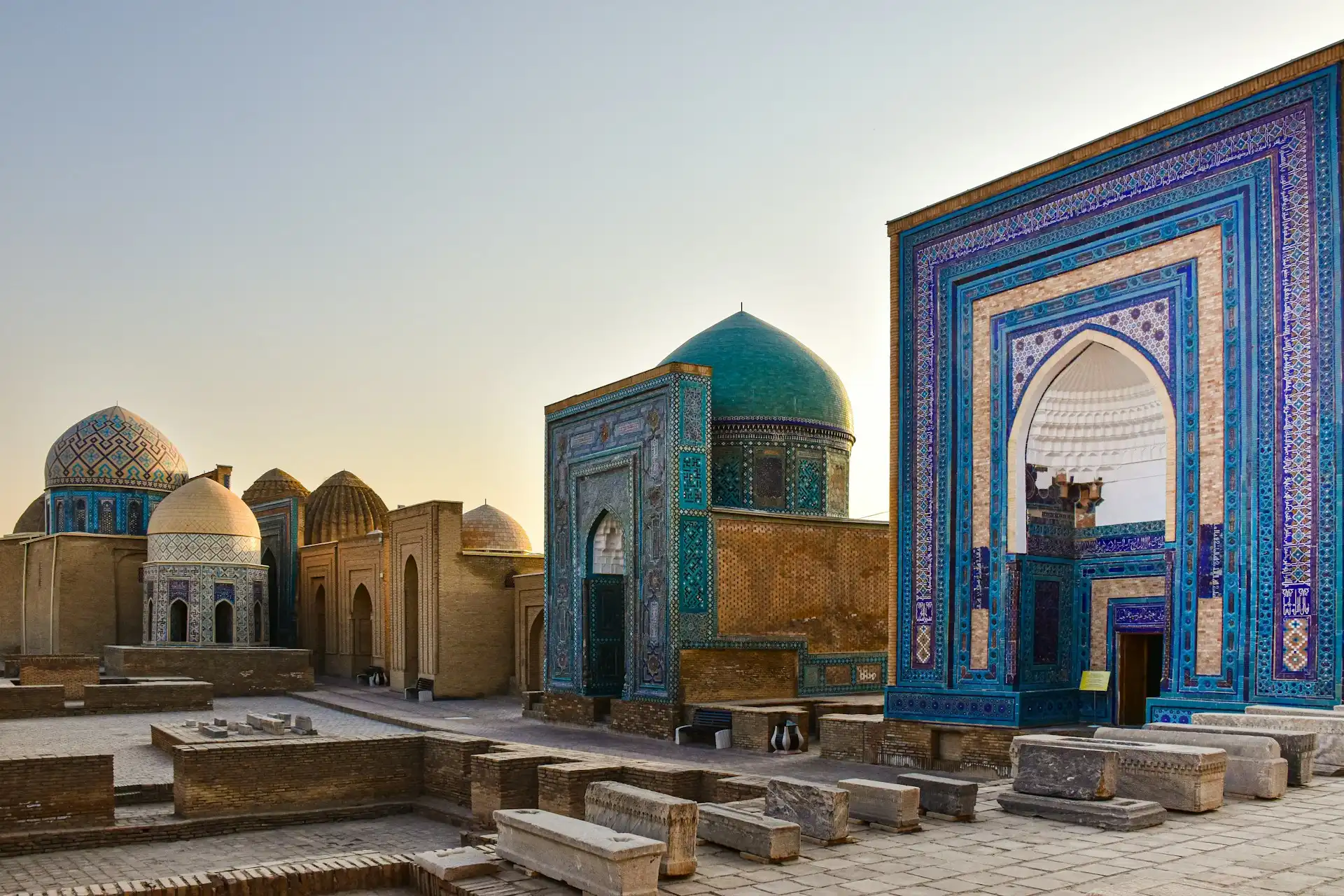
Islamic architecture represents a remarkable journey of cultural adaptation and spiritual expression. From the humble beginnings with the Kaaba in Mecca, Islamic builders and architects transformed architectural practices across three continents. From the early mosques of the Umayyads to the grand structures of the Ottomans, each era created new elements that enhanced both the beauty and functionality of Islamic spaces. This article will explore the origins, evolution, expansion, features, and global influence of Islamic architecture.
Origins of Islamic Architecture
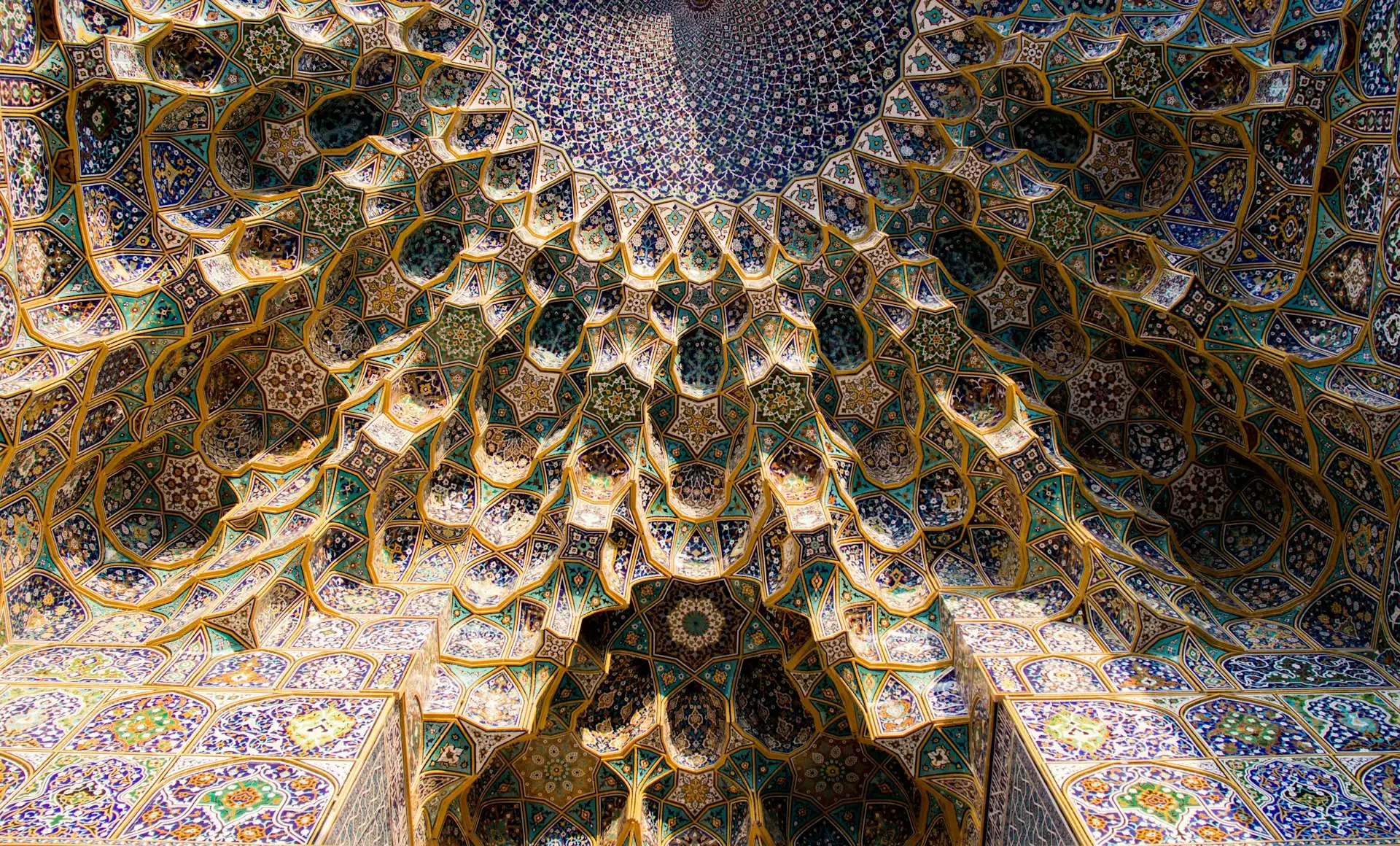
At Masjid al-Haram in Mecca, the story of Islamic architecture began with the Kaaba, the most sacred site in Islam. First built as a sanctuary for the worship of one God in a region dominated by polytheistic traditions by Prophet Ibrahim and his son Ismail around 2000 BCE. Over time, it was reconstructed and became the spiritual center of Islamic prayer and pilgrimage. This early structure, with its simplicity, directed the orientation of mosques toward Mecca (the Qibla) and laid the foundation for Islamic religious architecture.
The islamic architectural style began to emerge in the 7th century with the spread of Islam from the Arabian Peninsula. Actually, the earliest mosques were very humble structures constructed with vernacular practices that focused more on worship than design. The earliest cited attempt at creating Islamic architecture was Al-Masjid al-Nabawi in Medina around 622 CE. Prophet Muhammad himself laid the basic foundations of the mosque which was then added upon with time. With a focus on function over beauty, it featured an open courtyard, a prayer hall, and rows of columns (hypostyle).
Evolution of Islamic Architecture
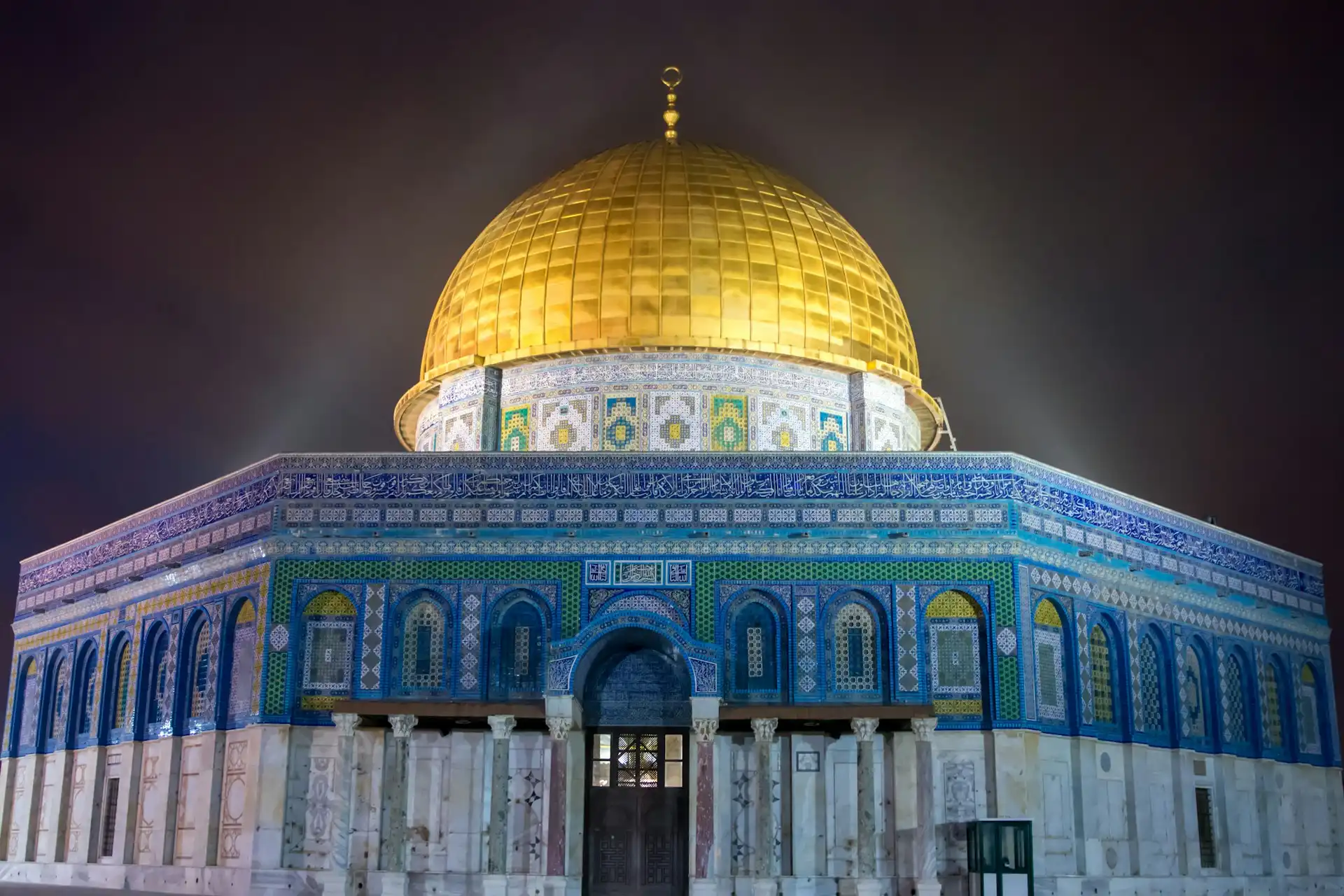
As the Islamic empire expanded, it drew inspiration from various architectural traditions, particularly Roman, Byzantine, Sasanian, Persian, and Egyptian. The Byzantine influence introduced the use of domes and arches, as seen in the Dome of the Rock (691 CE), which drew inspiration from Byzantine churches like the Hagia Sophia. Sasanian Persian architecture contributed to the use of large courtyards, iwans, and stucco work, which became prominent during the Abbasid period, especially in Baghdad. The Great Mosque of Kairouan in Tunisia exemplifies Egyptian and North African influences, which introduced hypostyle mosques and vast halls supported by columns.
The Umayyads (661–750 CE) pioneered grand mosque designs. They introduced mihrabs and minarets, as seen in the Great Mosque of Damascus, which combined Roman and Byzantine elements with Islamic innovations. The Abbasids (750–1258 CE) expanded these ideas and added architectural elements like spiral minarets and wide courtyards, as seen in the Great Mosque of Samarra.
During the Mughal and Ottoman eras, Islamic architecture reached new heights. Mimar Sinan, the great Ottoman architect with 476 structures in his repertoire, revolutionized mosque design with works like the Süleymaniye Mosque. His innovative techniques influenced Mughal architecture, particularly the design of the Taj Mahal by Ahmad Lahori.
Core Features of Islamic Architecture
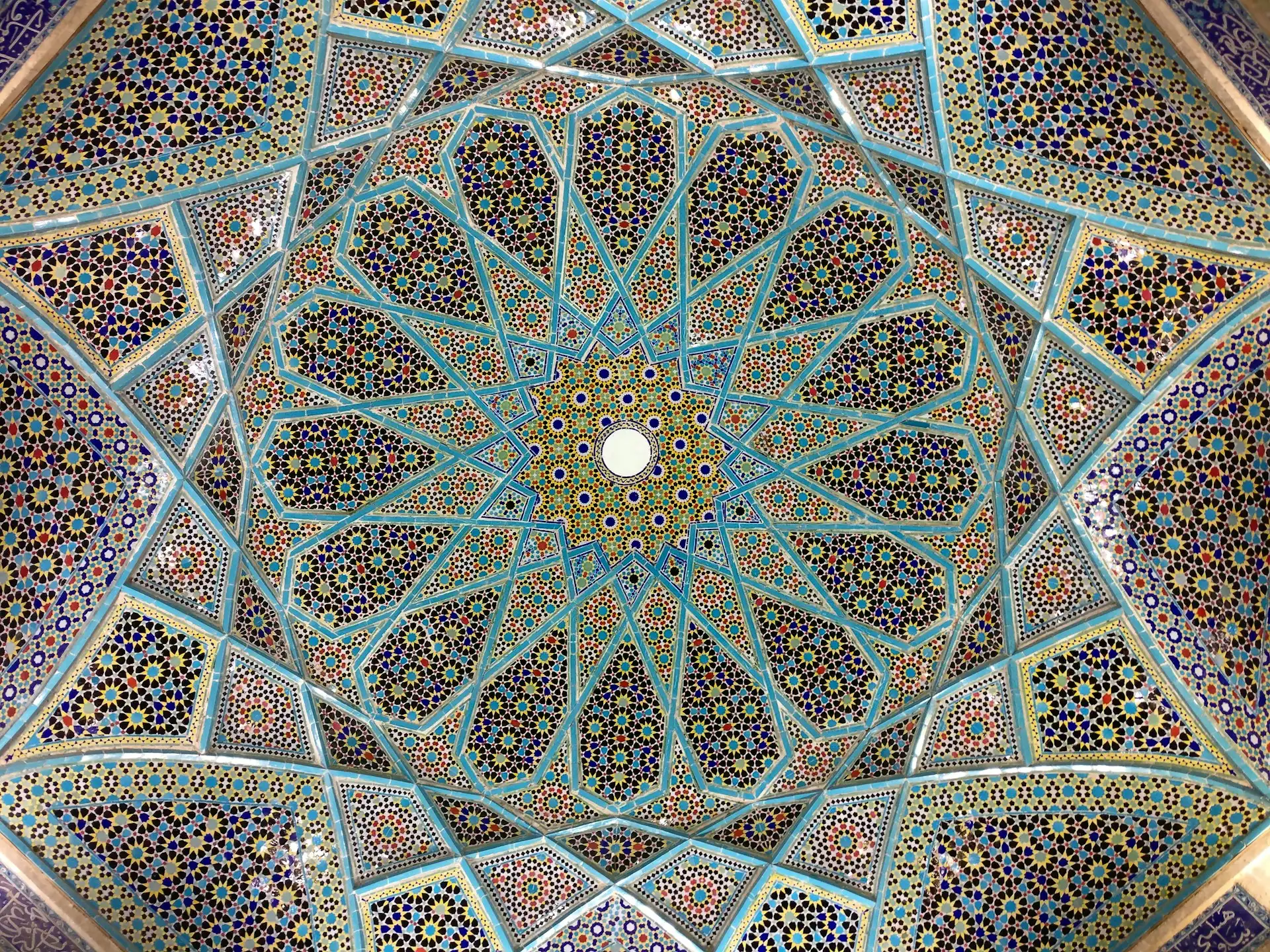
Despite contrary belief, Islamic architecture encompasses more than the building of religious sites, but also palaces, fortifications, schools (known as madrasahs), civic buildings, and bazaars – basically the whole fabric of the city. This style was different from other religious architectural creations, for it focused on an abstract representation of religion instead of figurative. An architectural approach so deeply rooted in its Islamic values of unity, balance, and transcendence gave birth to a mesmerizing visual language composed of geometry, calligraphy, and arabesque.
Key features include:
- Geometric patterns that symbolize the cosmic order.
- Pointed arches and domes are structural innovations that also represent the heavens.
- The mashrabiya, a wooden lattice screen, allows light and air to enter while maintaining privacy.
- Abstract arabesque patterns, often featuring stylized plants and flowers.
- Calligraphy serves as both decoration and a visual expression of Quranic verses.
- Courtyards and gardens are tranquil spaces for prayer, contemplation, and social gatherings.
- Minarets are tall towers that call people to prayer.
- Water features are used for both communal and practical purposes.
Calligraphy and Arabesque
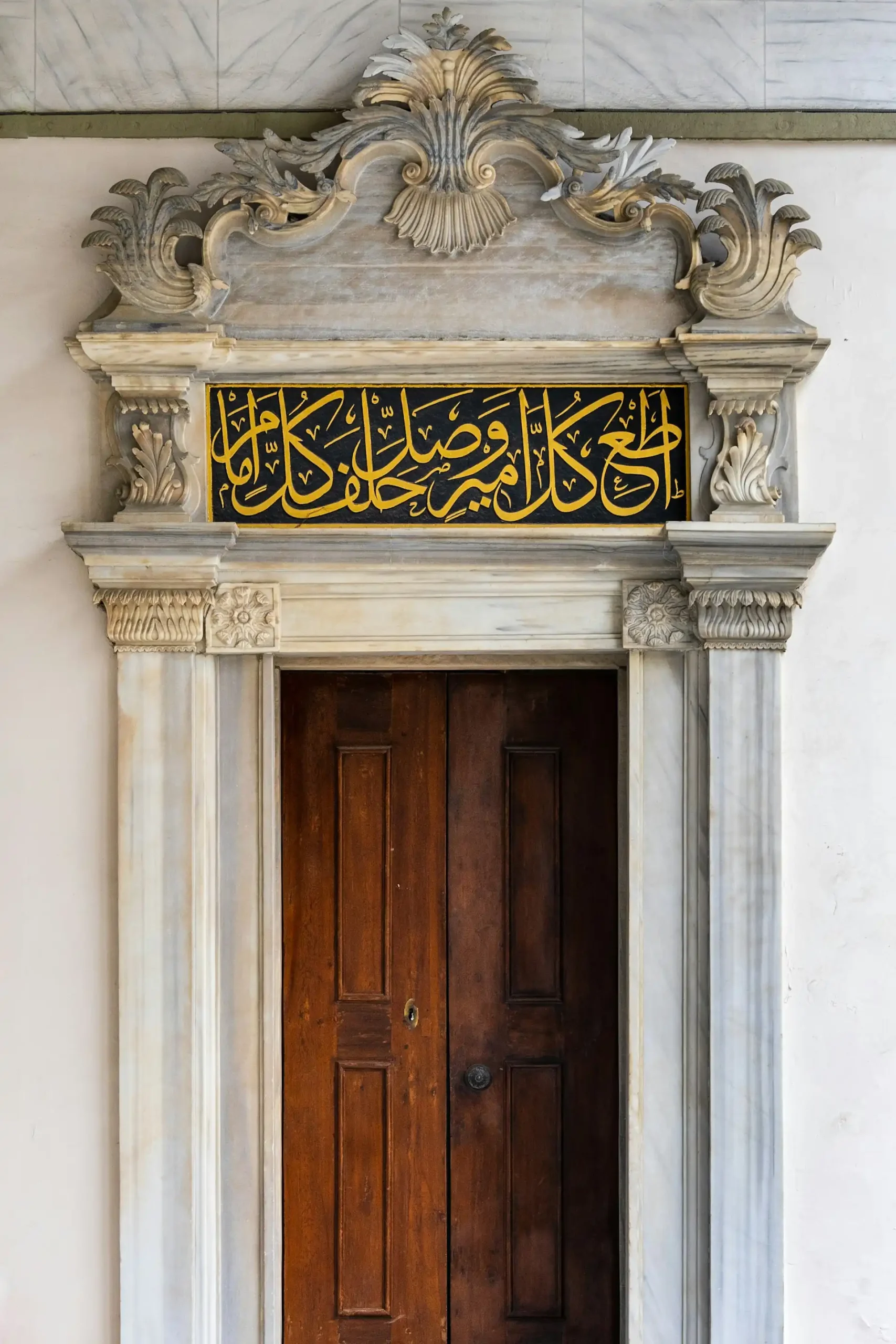
The story of ornamentation in Islamic architecture stems from the desire to ornament Islamic spaces without defying the core ethos of Islam, which deterred figurative and accurate representations. When the churches captivate souls with their murals and drawings of angels, how can Islamic architecture pull on that inspiration and make it its own? This gave birth to an Islamic art style known as aniconism and manifests in Calligraphy and Arabesque.
Calligraphy was long present before the rise of Islamic architecture in Greek, Roman, Chinese, and Persian cultures. However, it was befitting to utilize it and ornament the palaces and mosques with Quranic verses to give beauty and remind people of God’s word. The Dome of the Rock is among the earliest structures to use calligraphy extensively, with Quranic verses inscribed on its walls.
Arabesque can be thought of as the Islamic version of Mandala, but of course, it differs in its details. Unlike traditional botanical designs, arabesques feature stylized, repeating motifs like vines, flowers, and leaves that grow endlessly to symbolize the infinite nature of creation. This artistic form reached its height during the Ottoman era when it was intricately combined with calligraphy to create visually and spiritually harmonious spaces.
Global Influence of Islamic Architecture
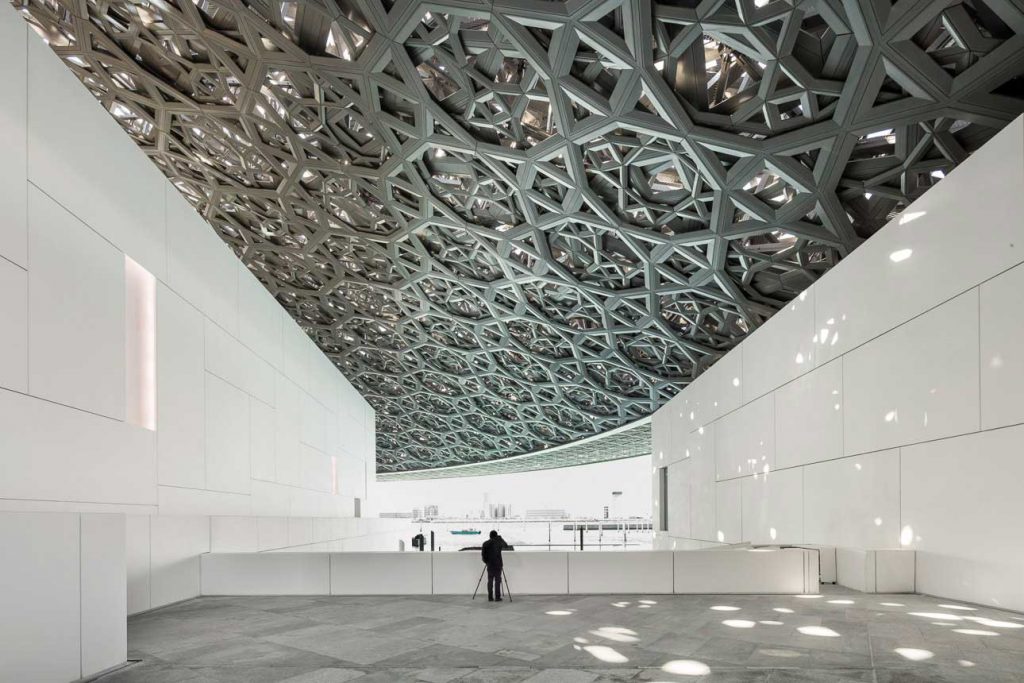
The influence of Islamic architecture extended beyond its border, especially during the Islamic Golden Age (8th–13th centuries). One of the less-known influences is Gothic architecture in medieval Europe. It actually makes a lot of sense, because Gothic architecture emerged with the purpose to find ways to connect more with the divine and allow in more light. This led them to utilize appointed arches to have taller, more stable structures, and soaring cathedrals such as Notre-Dame de Paris and Chartres Cathedral, with grand vaults and intricate ceilings. Islamic architecture’s ornamentation also inspired the Gothic style with its arabesque patterns and geometric designs.
Architects like Hassan Fathy revitalized traditional Islamic elements, particularly the mashrabiya, in modern architectural applications and integrated them into sustainable designs that resonate with contemporary needs. This gave way to the rise of perforated facades in architecture and their adoption by various Western architects. The abstract ornamentation, utilization of light, and juxtaposition of space, and geometry continue to inspire contemporary architecture today in projects such as the Institut du Monde Arabe in Paris and Louvre Abu Dhabi in UAE, both designed by Jean Nouvel.
Architectural Examples
Süleymaniye Mosque
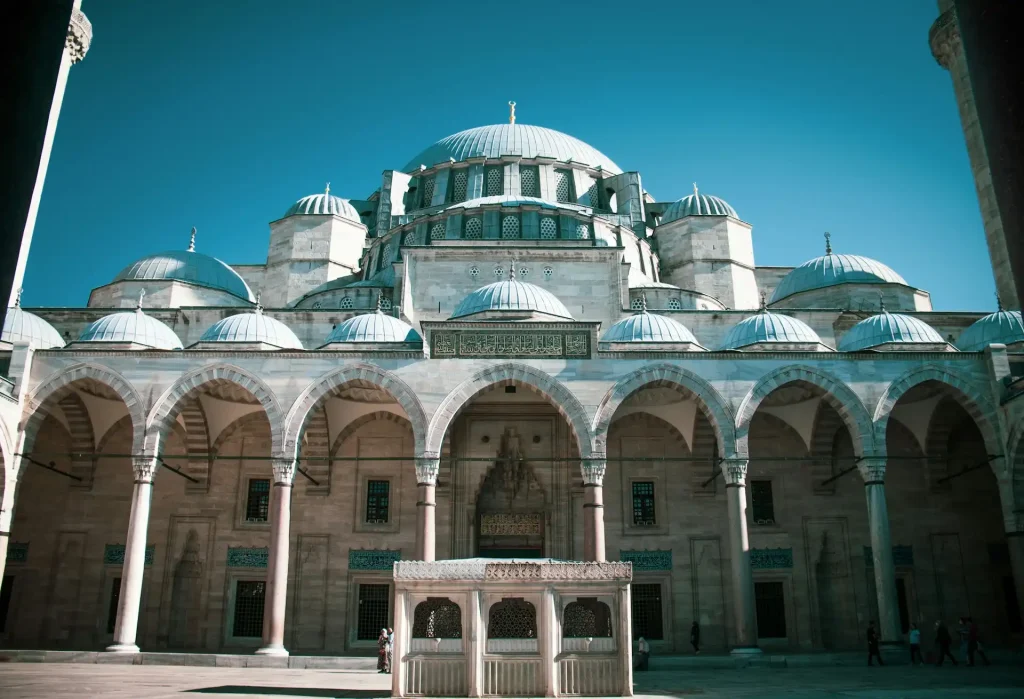
Year Built: 1550–1557 CE
Architect: Mimar Sinan
Mimar Sinan’s Süleymaniye Mosque in Istanbul stands as one of the most impressive examples of Ottoman and Islamic architecture. Built for Sultan Süleyman the Magnificent, it blends Byzantine and Islamic styles. The mosque’s central feature is its vast dome, which rises to 53 meters, symbolizing the grandeur of the heavens.
The interior is adorned with elegant Iznik tiles, intricate calligraphy, and stained glass windows, which create a serene and luminous atmosphere. Sinan’s architectural brilliance is evident in the mosque’s balance of proportions and structural innovations, such as the use of semi-domes to support the main dome. The complex surrounding the mosque includes schools, baths, and a hospital, embodying the Ottoman concept of a mosque complex serving the community.
Taj Mahal
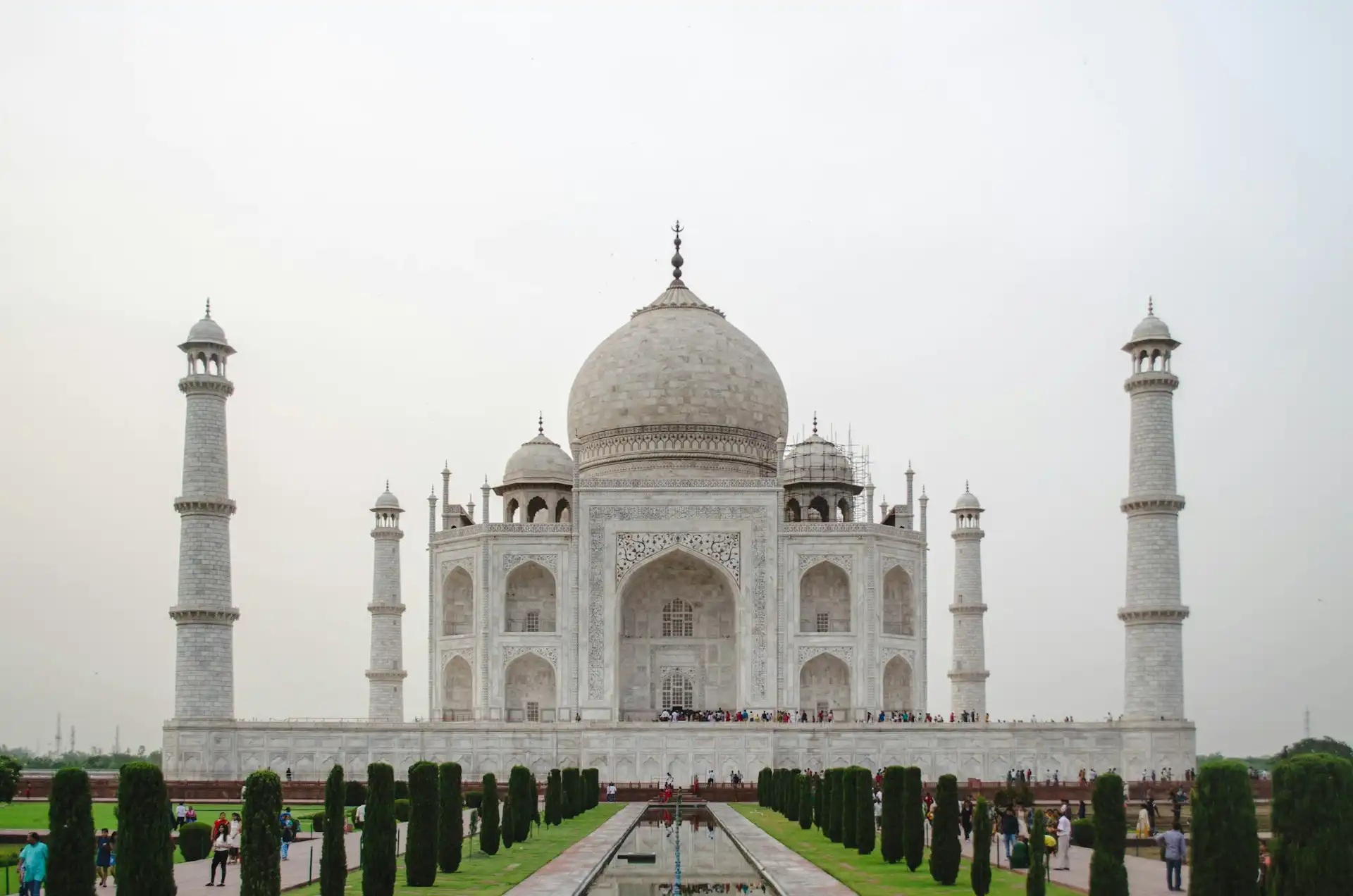
Year Built: 1632–1653 CE
Architect: Ustad Ahmad Lahori
The Taj Mahal, located in Agra, India, is one of the most iconic structures in the world. Built by Mughal Emperor Shah Jahan as a mausoleum for his beloved wife Mumtaz Mahal, the Taj Mahal blends Persian, Ottoman, and Mughal architectural styles. Its central dome, surrounded by four minarets, exemplifies symmetry and balance, key elements of Islamic architecture.
The structure is made of white marble inlaid with precious stones creating intricate floral patterns. The surrounding charbagh (symmetrical gardens) further enhances its elegance. The use of iwan (vaulted spaces) and pishtaq (ornamental portals) reflects the architectural influences of Mimar Sinan, who significantly impacted Indo-Islamic design.
Institut du Monde Arabe

Year Built: 1987
Architect: Jean Nouvel
The Institut du Monde Arabe in Paris is a prime example of how contemporary architecture can blend Islamic design with modern technology. Designed by Jean Nouvel, this cultural institute celebrates the relationship between the Arab world and France, both architecturally and symbolically. Its most iconic feature is the south elevation, which integrates mashrabiya-inspired geometric screens. These mechanical apertures respond to light levels then automatically adjust to regulate the amount of natural light entering the building. The dynamic nature of these screens not only references traditional Islamic architectural elements but also embodies cutting-edge engineering. The building’s use of glass and steel, juxtaposed with Islamic patterns, reflects a dialogue between tradition and modernity.
Sheikh Zayed Grand Mosque
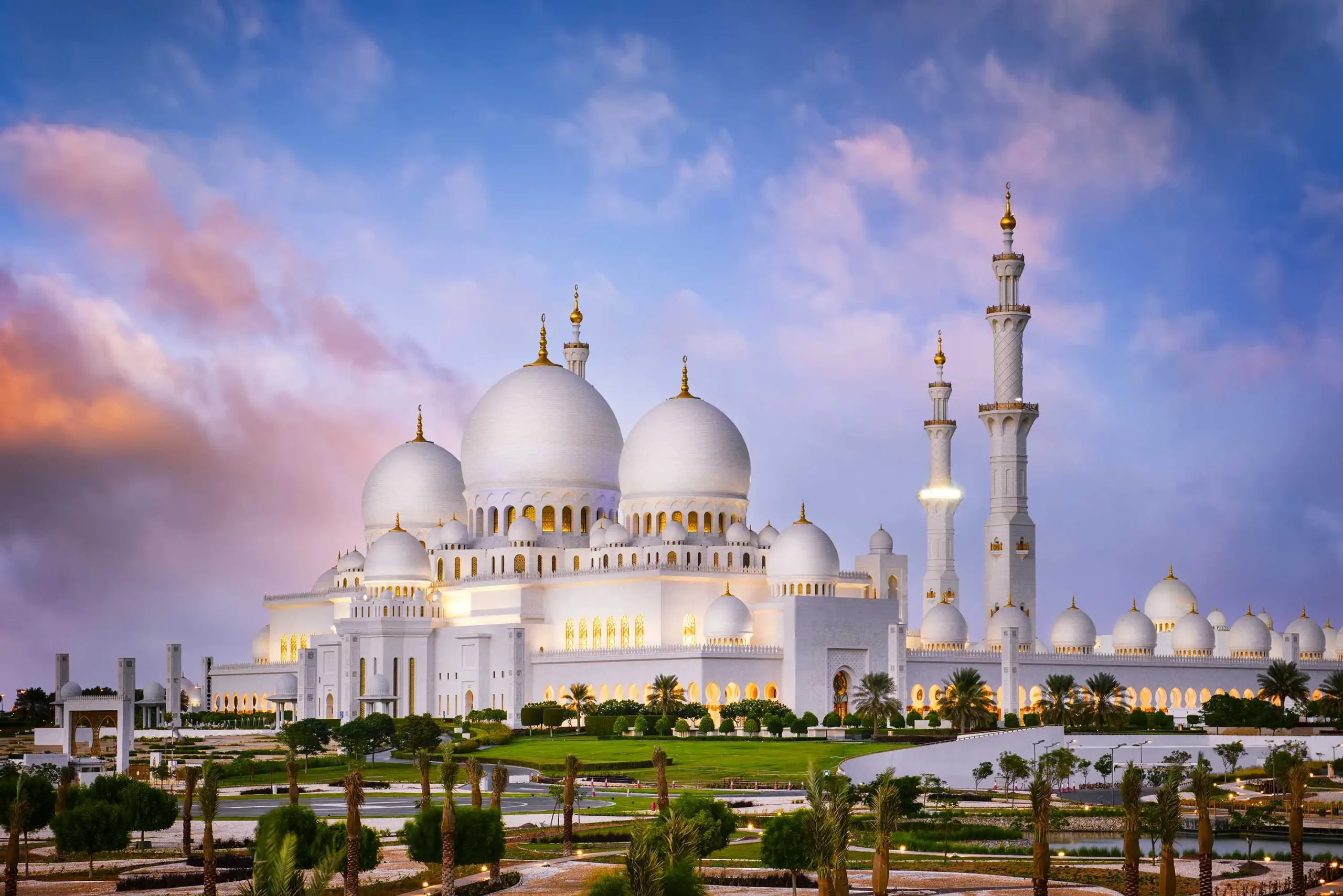
Year Built: 1996–2007 CE
Architect: Yousef Abdelky
The Sheikh Zayed Grand Mosque, located in Abu Dhabi, is one of the largest and most magnificent mosques in the world. Designed by Syrian architect Yousef Abdelky, the mosque incorporates elements of Mughal, Moorish, and Ottoman architectural styles. It features 82 domes, over 1,000 columns, and four minarets. The mosque’s white marble façade is inlaid with semi-precious stones, creating intricate floral designs. Its vast courtyard, known as the Sahn, is the largest example of mosaic art in the world. The interior boasts the world’s largest hand-woven carpet and elaborate chandeliers. The mosque serves as a symbol of Islamic unity and reflects the blend of traditional and contemporary design.




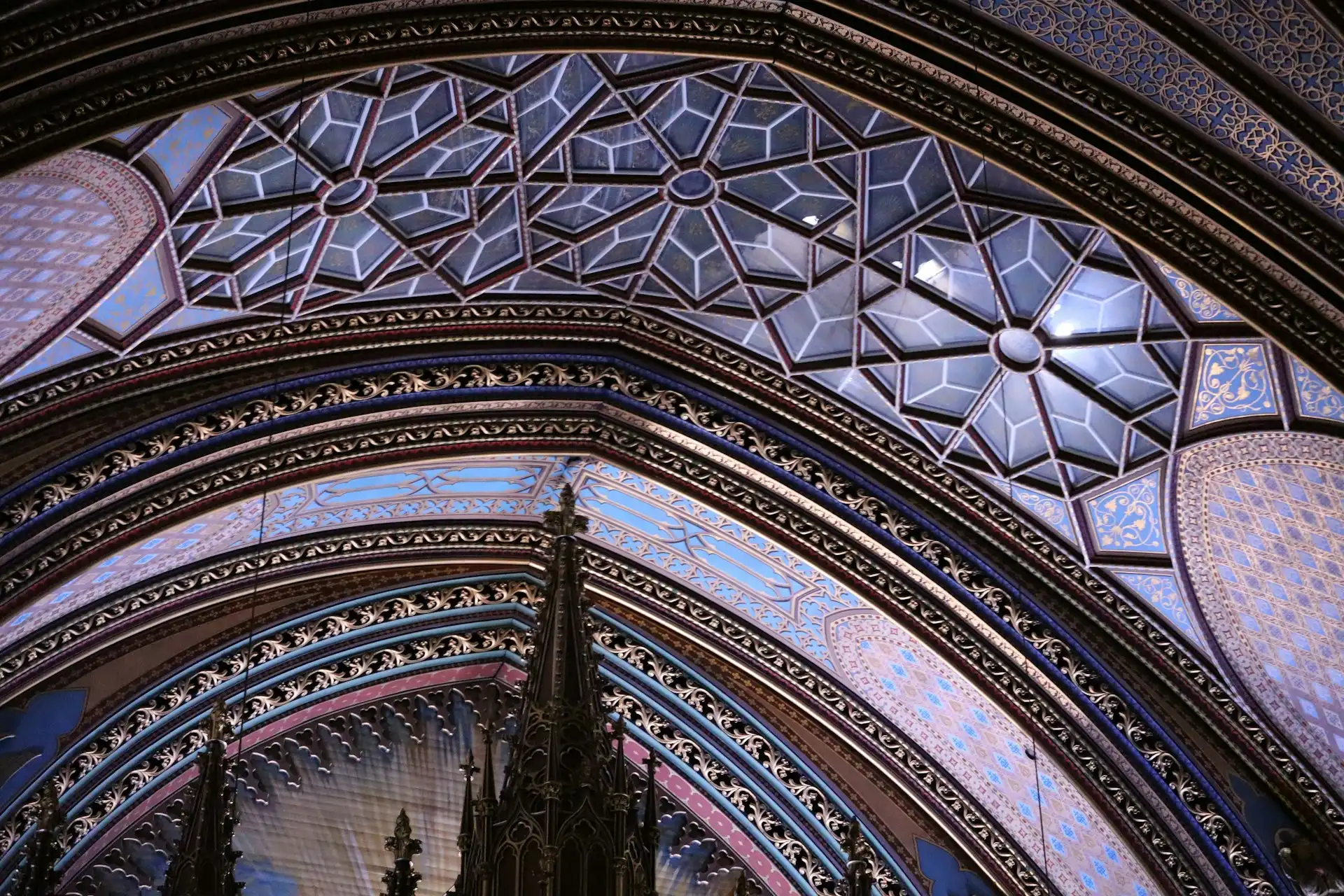
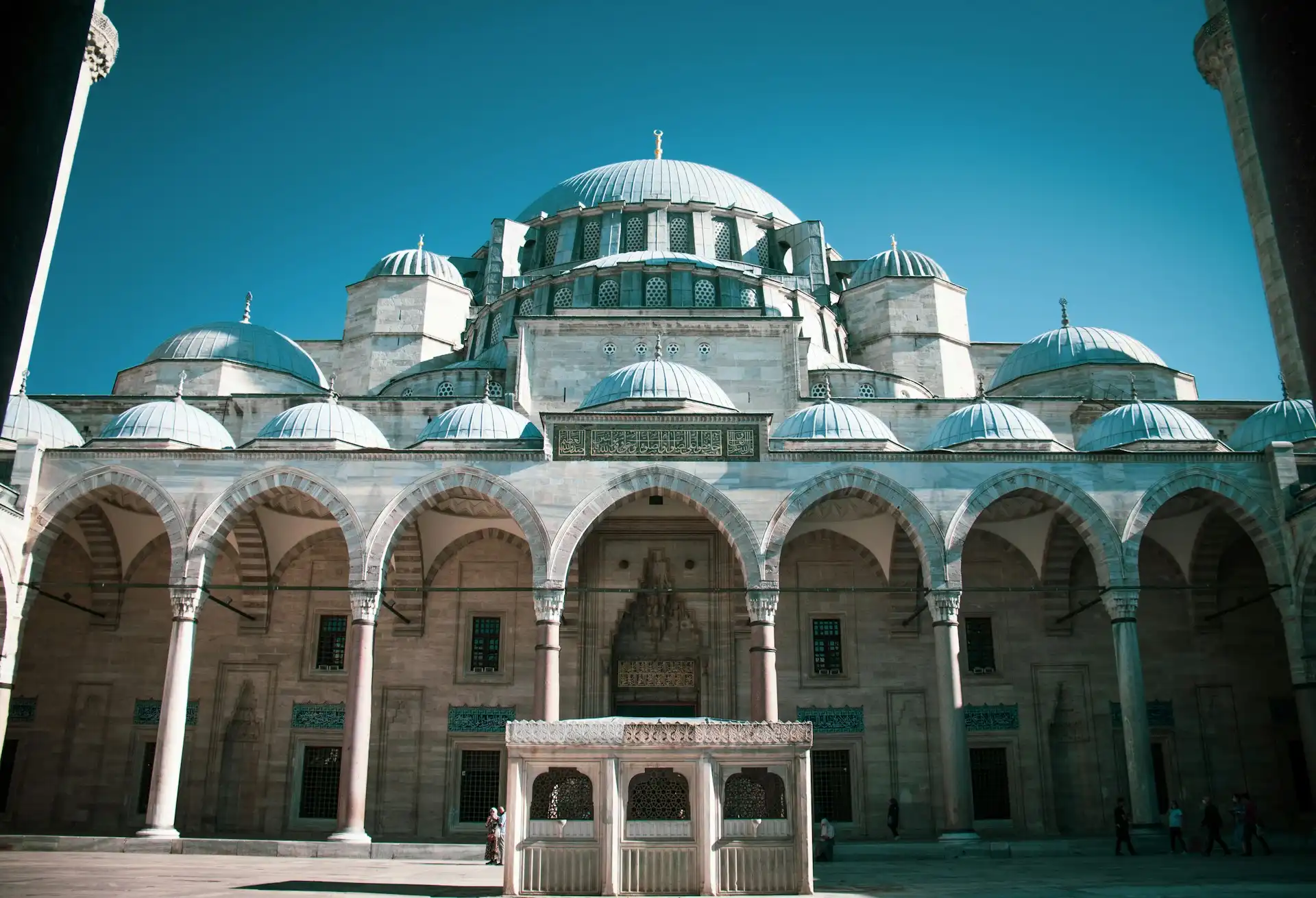




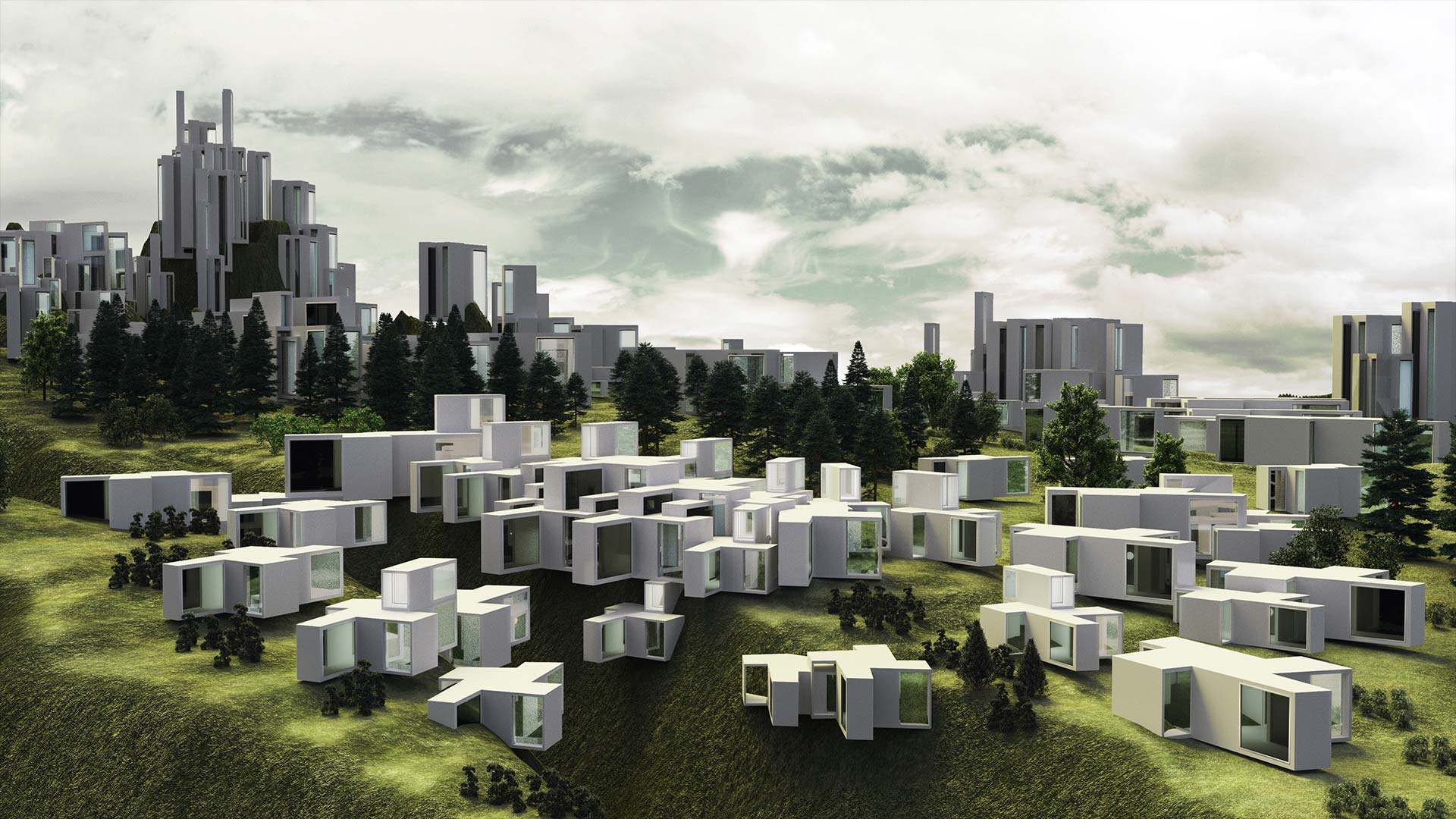









Leave a comment